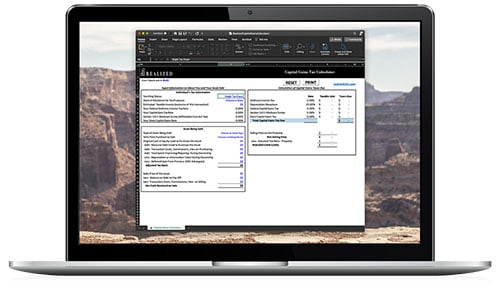
Selling a rental property means freeing up capital, hopefully nabbing a tidy profit, and moving on to the next great opportunity. It also means paying taxes on those gains unless you have a plan to defer them.
One of the most common capital gains tax deferment methods utilized by real estate investors is the 1031 exchange. By exchanging a relinquished property for a like-kind property plus following some important rules, investors can defer their capital gains taxes. Let’s break it down and see how a 1031 exchange can defer taxes on capital gains.
1031-Exchange Basics
The main reason to do a 1031 exchange is for its tax deferment benefit. This includes deferring capital gains and depreciation recapture taxes. Deferment does not mean the investor doesn’t have to pay taxes. Instead, the tax bill is pushed out into the future. If the property is ever sold outright, taxes will be due, assuming there is a gain. By choosing the deferral route, investors will have more cash available to invest in new opportunities.
To take advantage of the 1031 exchange's tax deferment, specific rules must be followed. Investors would need a qualified intermediary or QI to facilitate the process. The QI ensures that one does not come in contact with proceeds from the sale of the relinquished property. There are also some important rules and timelines to follow.
Rules and Timelines
The relinquished property is the one that is being sold. The replacement property is the new property that is being acquired. Once the relinquished property is sold, investors have 45 days to identify up to three potential replacement properties.
You have 180 days to complete the exchange. The replacement property or properties must be acquired no later than 180 days following the sale of the relinquished property or the due date of the income tax return (including extensions) for the tax year in which the property is sold, whichever occurs first.
As an example, you sell a property for $1.5 million. You can then acquire three more properties for $500,000 each. Or, you might find a single replacement property worth $1.5 million.
In addition to the three property rule, there are two other methods for identifying replacement properties. One is the 200% rule and the other is the 95% rule.
The 200% identification rule states that an investor can identify more than three properties. The aggregate value of those properties can’t exceed 200% of the relinquished property (or properties disposed of).
The 95% identification rule states that an investor can identify an unlimited number of replacement properties so long as their total value is more than 95% of the sale price of the relinquished property.
Given the timelines involved, it’s best to start looking for potential replacement properties before executing a 1031 exchange.
Heirs and Tax Deferment
After a 1031 exchange is executed, taxes on gains will be deferred until the property is sold. At that point, the investor can choose to do another 1031 exchange, which will continue the deferment. If the investor passes away and the property goes to his heirs, they will receive a step-up in basis. Basically, all gains held by the original investor disappear once the property passes to his heirs.
While the concept of a 1031 exchange may be easy to understand, executing it requires following strict rules and timelines. Otherwise, a taxable event may occur. That’s why it may be best to work with a financial team to help ensure everything goes smoothly.


